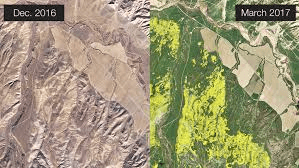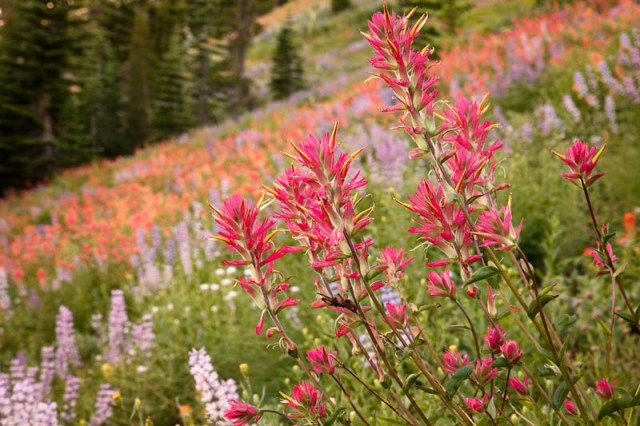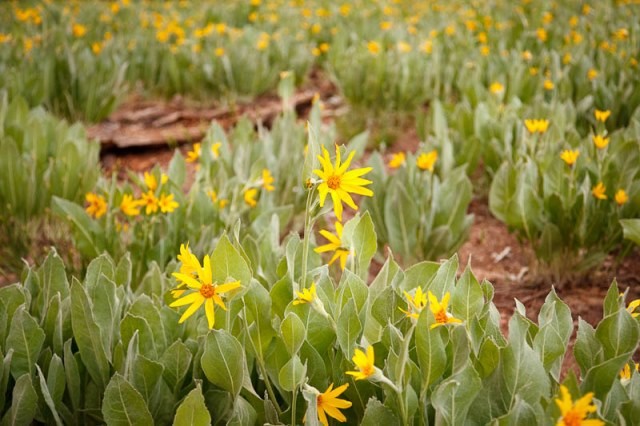Southern California is experiencing a record breaking “Super Bloom”. To help illustrate just how special this super bloom is, I reached out to my favorite park ecologist at Joshua Tree National Park, Rick McNeil, for an exclusive TRTA interview.

Lindsey:
Hi Rick, we’ve been hearing and reading so much about the super bloom exploding across southern California’s desert spaces up here in Tahoe. Like many, I love wildflowers and love an abundance of wildflowers, but are there things from an ecologist’s perspective that make this super bloom so special?
Rick:
This year offers a truly unique array of flower blooms due to the sheer volume of rainfall the state has received. In January alone, the amount of rain that fell on Joshua Tree National Park exceeded the yearly average. Under these relatively wet conditions, plants are not only appearing in greater numbers, but any plant that can flower will. Many seeds typically go dormant for years, even decades waiting for the right conditions. This year is one of those once or twice in a lifetime opportunities to see this level of diversity and density of bloom.
Lindsey:
Why does the desert need botanists? There’s not a lot going on to the naked eye.
Rick:
Arguably the desert doesn’t need botanists, but botanists need the desert and have a tremendous amount that they can learn from the desert. The Mojave Desert is a biodiversity hotspot. A major part of a botanist’s job is just finding out what’s out there. Botanists are regularly finding plants in new places they’ve never been found before as well as discovering new varieties of plants. By knowing and understanding the cycles of both common and rare plants in all settings, botanists can help guide land managers and owners on how to protect the local ecological system.
Lindsey:
Let’s say I’ve been trapped under a McLeod and a Pulaski for decades and have just discovered there’s a whole world of wildflowers. Where do I begin to understand?
Rick:
Best thing to do is to pick up a picture guide to any area you are exploring. Once you can start naming plants, they start taking on a different level of clarity. Learning about the area helps you understand how it all interacts. Start first with learning the plants on your favorite trail, then branch out from there. I am always looking at the plants around me; on the side of the highway, at a stop light, anywhere things grow, so I can better understand the overall relationship. When you are on the hunt for new plants, look for south facing exposed slopes and seeps. I love getting above the tree line and looking down for seeps within an alpine area. That’s one thing the desert is missing; alpine plants.
Another great resource is the California Native Plant Society whose goal is to enjoy and protect plants. Connecting with local chapter of any area that you hope to explore is a great way to find information regarding the areas plants as well as contributing your plant sightings to the CNPS inventory. The reports of amateur botanists in the field are an incredibly valuable resource. In Joshua Tree we use the INaturalist app to record plant location and flowering dates.
Lindsey:
Any pointers for Lake Tahoe wildflower enthusiasts?
Rick:
It is still too early to know when Tahoe’s wildflower season will peak. What I can say is plants are blooming earlier every year and alpine plants are generally considered to be the canaries in the coal mine. As climate changes, the alpine plants are usually affected first being major indicators of the ecological state. Plants that live on top of mountains have typically reached their adaptive migratory end point so if they cannot adapt to the changing conditions, they will disappear from that place. High elevation plants have to deal with extreme cold and radiation input forcing very cool adaptations like cushion plants. Cushion plants generally occur in the alpine zone, and are low growing mat or clump formations evolved for extreme environments. This form helps protect the plant from the wind and helps maintain higher temperatures inside the cushion formation.
The more people that understand the natural world around them, the more they are inclined to care for it. Learn a flower today.
Rick McNeill
Ecologist for Joshua Tree National Park
Tahoe’s Wildflower Hotspots:

And remember, look but don’t take!


